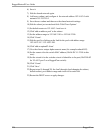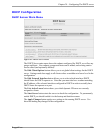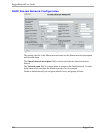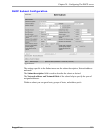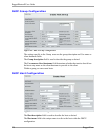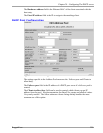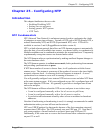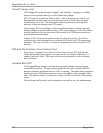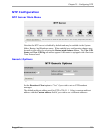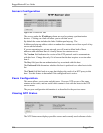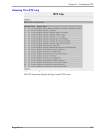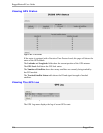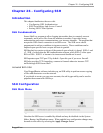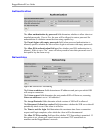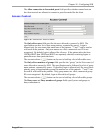
RuggedRouter® User Guide
The NTP Sanity Limit
NTP changes the system through “stepping” and “drifting”. Stepping is a sudden
change of time whereas drifting is a slow gradual time change.
NTP will step the system time when its starts. This is almost always at boot time.
Stepping the time afterwards can cause protocols (such as OSPF) that rely upon
accurate real time to fail. The router deals with this problem by restarting these
protocols if they are running when NTP restarts.
After booting, NTP uses drifting to achieve synchronization by making small and
frequent changes to router hardware clock. If the synchronizing server's clock differs
from the hardware clock by more than 1000 seconds, the NTP daemon construes a
major problem and terminates.
Usually, NTP will succeed in synchronizing the clock at boot time. If it fails to
synchronize the clock (perhaps due to a downed WAN link), the NTP daemon may
terminate. The router, however, will note the termination and will restart the NTP
daemon.
NTP And The Precision Time Protocol Card
If the router is equipped with a Precision Time Protocol card, NTP will treat the
Global Positioning System signals received from the card (when GPS locks) as a
stratum 0 reference clock. The router will always preferentially use this reference
above all others.
Included With NTP
Your RuggedRouter software includes the ntpq, ntpdc, ntptrace and ntp-keygen
command line utilities. The ntpq utility program can be used to monitor the NTP
daemon operations and determine how well it is running. The ntpdc utility program is
used to query the NTP daemon about its current state and to request changes in that
state. The ntptrace utility is a utility trace a chain of NTP servers back to the primary
source.
The ntp-keygen utility can be used to generate secure public keys for authentication.
232 RuggedCom



